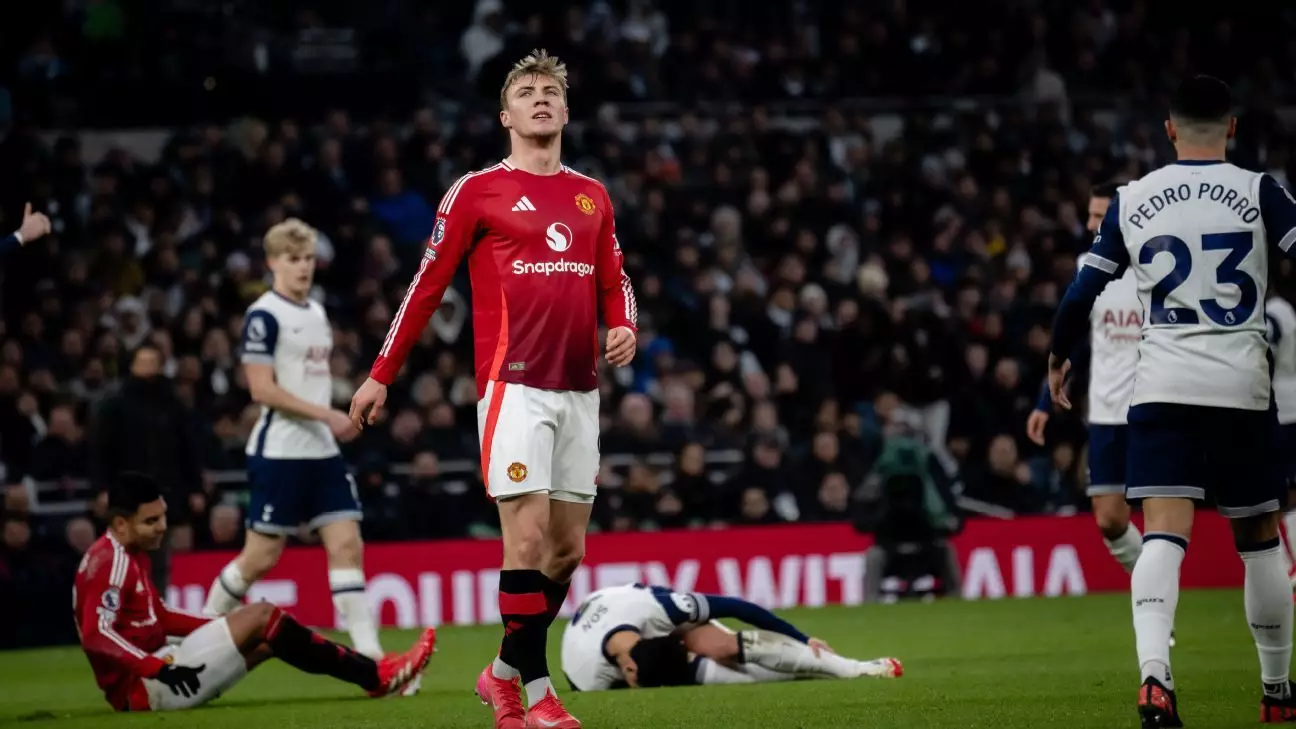In the world of football, the adage “If you don’t shoot, you don’t score” holds indispensable truth, especially in the highly competitive environment of the Premier League. This reality poses a significant question regarding Manchester United’s attacking dynamics, particularly focusing on their young center forward, Rasmus Højlund. Disturbingly, a comparative analysis reveals that Højlund’s shooting frequency is among the lowest for center forwards across the league, raising concerns about his effectiveness in front of goal and the overall goal-scoring problems at Manchester United.
While Højlund might be a crucial figure in United’s attacking setup, it is striking to note that 139 Premier League players exceed his shots-per-90-minutes ratio. Specifically, Højlund averages only 1.20 shots each match, a figure dwarfed by prolific strikers, such as Erling Haaland and Ollie Watkins, who consistently post figures upwards of 3.20. This disparity begs a deeper examination of Højlund’s role within the team and raises the alarm about United’s inability to convert scoring opportunities.
When attempting to unravel the reasons behind this alarming trend, it is vital to discern whether the issue lies more with Højlund himself, the tactical approach by head coach Ruben Amorim, or a combination of both. Notably, Amorim has previously managed players who significantly outperformed Højlund in terms of shot frequency. For instance, Viktor Gyökeres, who played under Amorim at Sporting CP, boasted an impressive average of 4.59 shots per 90 minutes, a stark contrast to Højlund’s lackluster output.
Even when exploring the broader dynamics at Manchester United, other forwards within the squad have managed to increase their shot totals despite a varied agenda. Forward Joshua Zirkzee, who has undergone a turbulent season but still averages 1.96 shots per match, exemplifies that shooting proficiency may not be purely a matter of talent but can also be influenced by positioning and confidence.
While scrutiny of Højlund’s shooting metrics is warranted, it is equally important to consider external factors. Football is inherently collaborative, and a center forward’s effectiveness can often be contingent upon the quality of service provided by the midfield. For instance, Højlund shares the pitch with Bruno Fernandes, a player who makes nearly three attempts on goal per game. The overlap in roles might inadvertently prevent Højlund from asserting himself more actively in the attacking third, creating a ripple effect that diminishes his shooting opportunities.
Moreover, the psychological aspect cannot be overlooked. The burden of expectation can bear heavily on a young player’s confidence, particularly when he finds himself at a storied club like Manchester United. This pressure might inhibit his willingness to shoot, perpetuating a cycle wherein hesitance further diminishes his shot totals.
At just 22 years old, Højlund still has ample opportunity for improvement. History tells us that many players reach their prime later, refining their instincts and shooting accuracy over time. This developmental arc may benefit Højlund if he can find ways to integrate himself more effectively into the squad’s offensive play.
The responsibility extends beyond just Højlund, however. Amorim must devise strategy adjustments that enhance goal-scoring opportunities for him and capitalize on the team’s collective strengths. A reinvigorated focus on attacking fluidity and movement in the final third could see both Højlund and Manchester United’s overall number of shots—and, in turn, goals—rise.
The onus is on both Højlund to take control of his situation and on Amorim to innovate within the team’s attacking framework. Should this lack of shooting persist, Manchester United may need to consider adjustments in their squad dynamics. The pivotal question remains: can Højlund evolve into the prolific striker United needs, or must the club seek another option? Only through a concerted effort from both player and management can Manchester United hope to effectively tackle their goal-scoring woes.

Leave a Reply